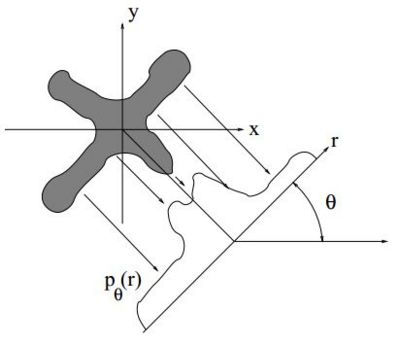- ↳ Topic 3: Magnetic Resonance Imaging
The Bouman Lectures on Image Processing
A sLecture by Maliha Hossain
Topic 3: Magnetic Resonance Imaging
© 2013
Contents
Excerpt from Prof. Bouman's Lecture
Accompanying Lecture Notes
Magnetic Resonance Imaging (MRI)
Definition
- Can be very high resolution
- No exposure to ionizing radiation
- Very flexible and programmable
- Tends to be expensive, noisy, and slow
MRI Attributes
- Based on magnetic resonance effect in atomic species
- Does not requires any ionizing radiation
- Numerous modalitites
- Conventional anatomical scans
- Functional MRI(fMRI)
- MRI Tagging
- Image formation
- RF excitation of magnetic resonance modes
- Magnetic field gradients modulate resonance frequency
- Reconstruction computed with inverse Fourier transform
- Fully programmable
- Requires an enormous (and very expensive) superconducting magnet
Magnetic Resonance
- Atom will precess at the Lamor frequency
$ \omega_0 = LM \ $
where
$ M $ is the magnitude of the ambient magnetic field
$ \omega_0 $ is the frequency of precession in radians per second
$ L $ is the Lamor constant and its value depends on the choice of atom
The MRI Magnet
- Large superconducting magnet
- Uniform field within bore
- Very large static magnetic field
References
- C. A. Bouman. ECE 637. Class Lecture. Digital Image Processing I. Faculty of Electrical Engineering, Purdue University. Spring 2013.
- G. Francis. Psy 200. "Introduction to Cognitive Psychology". Class Lecture Notes. Faculty of Psychological Sciences, Purdue University. Spring 2013.
Questions and comments
If you have any questions, comments, etc. please post them on this page
Back to the "Bouman Lectures on Image Processing" by Maliha Hossain


